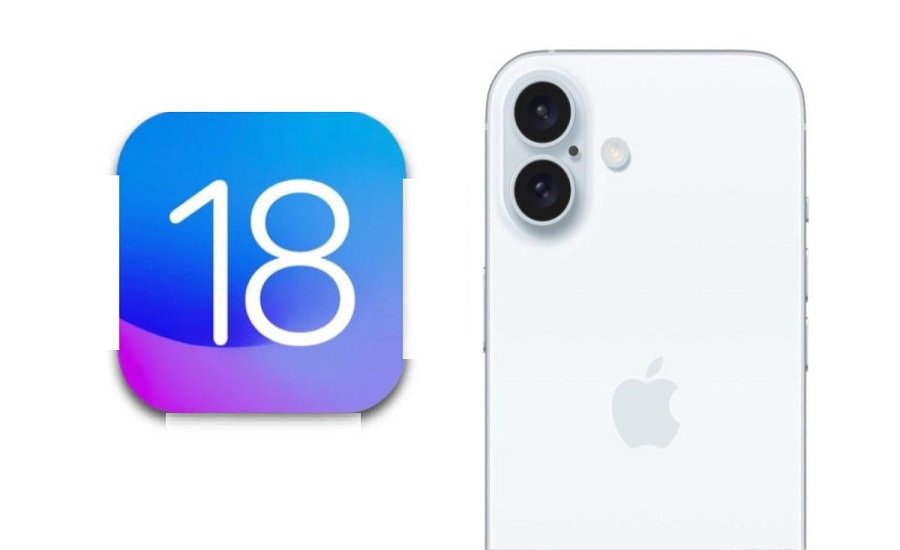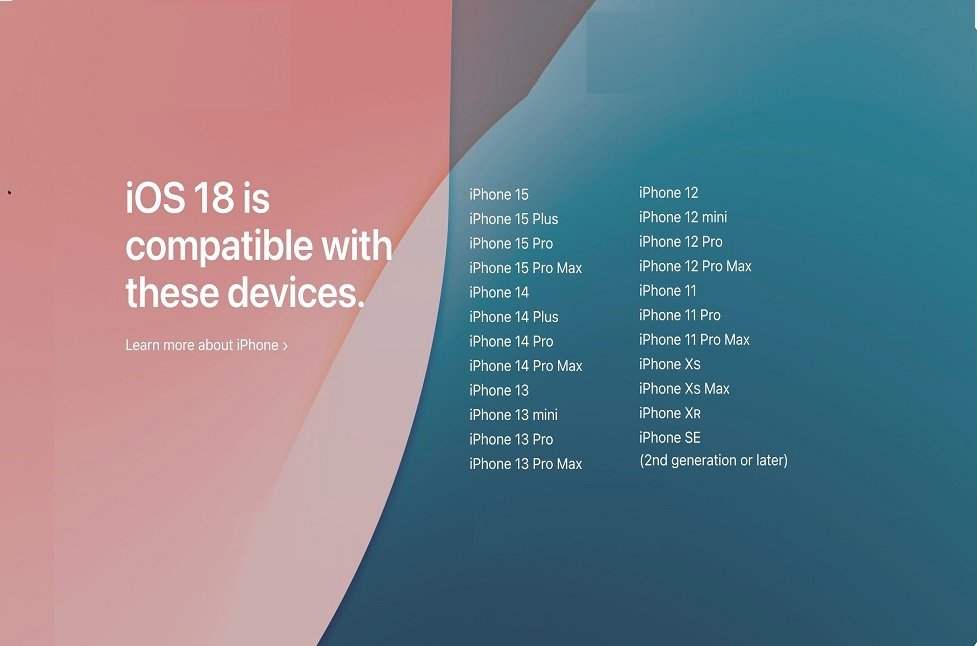Tech Innovation
Cloud Computing Services: How SaaS, PaaS, and IaaS Work

Cloud Computing Basics
In today’s digital age, cloud computing has emerged as a cornerstone of modern technology, revolutionizing the way we store, manage, and process data. But what exactly is cloud computing, and how does it impact our daily lives and businesses? Let’s dive deep into the world of cloud computing, exploring its characteristics, delivery models, and the major players in the industry.
What is Cloud Computing?
Cloud computing is a technology paradigm that allows on-demand network access to shared computing resources. Essentially, it’s a model for managing, storing, and processing data over the internet rather than on a local server or personal computer. This shift to online resources has made computing more efficient, scalable, and accessible to users worldwide.
Key Characteristics of Cloud Computing
- On-Demand Service: You only use what you need, when you need it. This flexibility allows for cost savings and efficiency.
- Network Access: Cloud services are accessible via the internet, enabling global access from any device connected to the web.
- Shared Resources: Cloud computing pools resources together, which are then used by multiple clients. This multi-tenancy model maximizes resource utilization.
- Scalability: Cloud services offer elasticity, allowing resources to be scaled up or down based on demand.
The Three Delivery Models of Cloud Computing: SaaS, PaaS, and IaaS
Cloud computing services are typically categorized into three delivery models: Software as a Service (SaaS), Platform as a Service (PaaS), and Infrastructure as a Service (IaaS). These models provide different levels of control, flexibility, and management, catering to diverse business needs.
1. Software as a Service (SaaS)
What is SaaS?
SaaS provides on-demand access to application software without the need for installation on individual devices. Unlike traditional software that requires licensing and local installation, SaaS operates on a subscription basis and is platform-independent.
- How SaaS Works: The cloud runs a single instance of the software and makes it available to multiple users. This reduces costs since all computing resources are managed by the vendor and accessed via a web browser or lightweight client applications.
- Who Uses SaaS?: End customers are the primary users of SaaS.
- Examples of SaaS Products and Services: Popular SaaS providers include Google (Gmail, Google Docs, Google Drive), Microsoft (Office 365), and Salesforce (CRM services).
- Pros: Universally accessible, excellent for collaboration, multi-tenancy support, vendor-provided software tools.
- Cons: Portability issues, dependency on internet performance, compliance restrictions.
2. Platform as a Service (PaaS)
What is PaaS?
PaaS provides a cloud-based environment that includes a programming language execution environment, operating system, web server, and database. It allows developers to build, compile, and run applications without worrying about the underlying infrastructure.
- How PaaS Works: Users manage data and application resources, while the vendor manages other aspects like storage, networking, and servers.
- Who Uses PaaS?: This model is designed for developers who need a robust platform for rapid development and deployment.
- Examples of PaaS Products and Services: Amazon Web Services (AWS) Elastic Beanstalk, Google App Engine, Microsoft Azure, and Heroku.
- Pros: Cost-effective development, scalability, faster time-to-market, easy deployment.
- Cons: Limited to provider-specific languages and tools, risk of vendor lock-in.
3. Infrastructure as a Service (IaaS)
What is IaaS?
IaaS provides the computing infrastructure—servers, storage, networking, and virtualization—over the internet. Users can rent these resources on-demand instead of purchasing and maintaining physical servers.
- How IaaS Works: While the vendor manages the core infrastructure components, users are responsible for managing applications, data, and other higher-level resources.
- Who Uses IaaS?: IaaS is often used by system administrators (SysAdmins) who require control over the operating system, storage, and deployed applications.
- Examples of IaaS Products and Services: Amazon EC2, Rackspace, and Google Compute Engine.
- Pros: Enhanced scalability, flexibility, dynamic workload support.
- Cons: Potential security issues, network and service delays.
Examples of Companies Leveraging Cloud Computing
- Amazon Web Services (AWS): A leader in cloud computing, AWS offers a wide range of services, including IaaS and PaaS. Their Elastic Compute Cloud (EC2), Simple Storage Service (S3), and Relational Database Service (RDS) are among the most popular.
- Apple iCloud: Primarily for Apple devices, iCloud allows users to back up and store multimedia and documents online, ensuring seamless integration across devices.
- Microsoft Azure: Provides a comprehensive suite of cloud services, including IaaS, PaaS, and SaaS, for both enterprises and individual users. Office 365 is a notable example of SaaS offered through Azure.
- Google Cloud Platform: Part of Google’s extensive ecosystem, Google Cloud supports collaboration, data storage, and a variety of other services, making it a popular choice for businesses and developers.
- IBM SmartCloud: IBM offers a range of cloud services through private, public, and hybrid models, catering to businesses looking for IaaS, PaaS, and SaaS solutions.
Conclusion
Cloud computing continues to be a game-changer in the technology landscape, providing flexible, scalable, and cost-effective solutions for businesses and individuals alike. Understanding the different cloud models—SaaS, PaaS, and IaaS—can help organizations choose the right strategy to meet their specific needs. As cloud technology evolves, it will further redefine how we interact with digital resources and leverage the power of the internet.
By grasping these fundamentals, you can navigate the cloud landscape more effectively and make informed decisions that drive innovation and growth.
Frequently Asked Questions (FAQ) About Cloud Computing Services
1. What is Cloud Computing?
Cloud computing is a technology that allows users to access computing resources (such as servers, storage, databases, networking, software, and more) over the internet (the cloud) instead of relying on local servers or personal devices. This on-demand service provides flexibility, scalability, and cost-efficiency to businesses and individuals.
2. What are the Different Types of Cloud Computing Services?
There are three main types of cloud computing services, each serving different needs:
- SaaS (Software as a Service): Provides access to software applications over the internet, without the need to install or maintain them locally.
- PaaS (Platform as a Service): Offers a cloud-based environment for developers to build, test, and deploy applications without managing the underlying infrastructure.
- IaaS (Infrastructure as a Service): Delivers virtualized computing resources such as servers, storage, and networking, allowing businesses to build their own platforms.
3. What is SaaS (Software as a Service) in Cloud Computing?
SaaS allows users to access software applications hosted on the cloud through a web browser. This model eliminates the need for local installation and maintenance, making it a cost-effective solution for businesses. Common examples include Google Workspace, Microsoft Office 365, and Salesforce.
4. What is PaaS (Platform as a Service)?
PaaS provides a cloud-based platform that includes infrastructure, operating systems, and development tools, allowing developers to create, test, and deploy applications. Examples of PaaS providers include Google App Engine, Microsoft Azure, and AWS Elastic Beanstalk.
5. What is IaaS (Infrastructure as a Service)?
IaaS provides virtualized computing resources such as virtual machines, storage, and networking, allowing businesses to build their own IT environments without investing in physical hardware. Popular IaaS providers include Amazon Web Services (AWS), Microsoft Azure, and Google Cloud Platform.
6. What are the Benefits of Cloud Computing Services?
Cloud computing offers several benefits, including:
- Cost Savings: Pay only for what you use, reducing costs on hardware and maintenance.
- Scalability: Easily scale resources up or down based on demand.
- Flexibility: Access data and applications from anywhere, on any device with an internet connection.
- Disaster Recovery: Enhanced backup and disaster recovery solutions.
7. What are the Disadvantages of Cloud Computing?
While cloud computing offers numerous advantages, there are some challenges:
- Security and Privacy: Data breaches and cyber-attacks can occur if security measures are not robust.
- Downtime: Dependence on internet connectivity can lead to downtime issues.
- Compliance: Regulatory and compliance concerns can arise, especially for businesses handling sensitive data.
8. What Are the Best Cloud Service Providers?
Some of the most popular cloud service providers include:
- Amazon Web Services (AWS)
- Microsoft Azure
- Google Cloud Platform (GCP)
- IBM Cloud
- Oracle Cloud
9. How Do I Choose the Right Cloud Computing Model (SaaS, PaaS, IaaS)?
Choosing the right model depends on your business needs:
- SaaS is ideal for businesses looking for ready-to-use software solutions.
- PaaS is best for developers who need a platform for building and deploying applications.
- IaaS is suitable for businesses needing control over their infrastructure without the cost of maintaining physical hardware.
10. Is Cloud Computing Secure?
Yes, cloud computing can be secure if proper measures are implemented. Cloud providers typically offer robust security features such as encryption, identity management, and compliance certifications. However, users must also follow best practices to ensure data security, such as using strong passwords, multi-factor authentication, and regular security audits.
11. What is a Public, Private, and Hybrid Cloud?
- Public Cloud: Services offered over the internet by third-party providers. They are cost-effective and scalable but may have less control over security.
- Private Cloud: Cloud infrastructure operated exclusively for a single organization, offering enhanced security and control.
- Hybrid Cloud: Combines both public and private clouds, providing greater flexibility and optimization of existing infrastructure, security, and compliance.
12. Can Small Businesses Benefit from Cloud Computing?
Absolutely. Cloud computing offers cost-effective solutions for small businesses by providing access to advanced technology without heavy upfront investment. It also allows for scalability, flexibility, and improved collaboration, making it easier for small businesses to compete in the market.
13. What Are the Latest Trends in Cloud Computing?
Some current trends in cloud computing include multi-cloud strategies, serverless computing, edge computing, artificial intelligence and machine learning integration, and enhanced cloud security measures.
14. How Does Cloud Computing Support Remote Work?
Cloud computing enables remote work by providing access to applications, data, and collaboration tools from anywhere with an internet connection. It allows teams to work together seamlessly and securely, regardless of location.
15. What is the Future of Cloud Computing?
The future of cloud computing involves more automation, increased use of AI and machine learning, growth in hybrid and multi-cloud environments, and stronger emphasis on data security and compliance.
Tech Innovation
Top 3 Features of Openai o1 Explained

OpenAI o1 represents a groundbreaking advancement in artificial intelligence. This model excels in generating and debugging complex code, showcasing its superior reasoning capabilities. OpenAI o1 ranks in the 89th percentile on competitive programming questions, highlighting its exceptional performance. The model’s ability to self fact-check enhances reliability, making it a significant player in the AI landscape. OpenAI’s financial growth, with annualized revenue reaching $1.6 billion by December 2023, underscores the impact of innovations like OpenAI o1. The introduction of o1-mini further expands accessibility, offering advanced features to a broader audience.
Openai o1 Feature 1: Advanced Reasoning Capabilities

Explanation of Advanced Reasoning
Openai o1 excels in advanced reasoning. The model can handle complex tasks with precision. Openai o1’s reasoning improves with more processing time. This capability allows the model to solve intricate problems effectively.
How it Works
Openai o1 uses large-scale reinforcement learning. This approach enhances its reasoning abilities. The model processes information step by step. Openai o1 evaluates each part of a problem thoroughly. This method ensures accurate outcomes.
Benefits of Advanced Reasoning
Advanced reasoning offers several benefits. Openai o1 can tackle complex code generation. The model provides reliable solutions for challenging tasks. Users experience improved accuracy and efficiency. Openai o1’s reasoning capabilities support diverse applications.
Comparison to Previous Models
Openai o1 surpasses previous models in reasoning. The model demonstrates superior problem-solving skills. Openai o1 handles tasks that older models struggled with. This advancement marks a significant leap in AI technology.
Improvements Over Past Models
Older models faced challenges with simple reasoning tasks. Openai o1 addresses these issues effectively. The model’s holistic reasoning sets it apart. Openai o1 can think through tasks like a human. This improvement enhances its overall performance.
Examples of Use Cases
Openai o1 finds use in various fields. The model assists in competitive programming. Openai o1 supports complex data analysis. Developers use the model for debugging intricate code. Openai o1’s reasoning capabilities benefit many industries.
Openai o1 Feature 2: Self Fact-Checking
Explanation of Self Fact-Checking
OpenAI o1 introduces self fact-checking. The model reviews information thoroughly. This process ensures accuracy in responses. OpenAI o1 evaluates each part of a question. The model’s reasoning enhances reliability.
How it Works
OpenAI o1 uses advanced reasoning. The model spends more time on questions. Each element receives careful consideration. This method improves the quality of answers. OpenAI o1 effectively fact-checks itself.
Benefits of Self Fact-Checking
Self fact-checking offers clear advantages. Users receive more accurate information. The model reduces errors in complex tasks. OpenAI o1 enhances trust in AI-generated content. This feature supports better decision-making.
Comparison to Previous Models
OpenAI o1 surpasses earlier models. The self fact-checking feature marks a significant improvement. Previous models lacked this capability. OpenAI o1 provides more dependable results.
Improvements Over Past Models
Older models struggled with accuracy. OpenAI o1 addresses these limitations. The model’s ability to fact-check sets it apart. Users experience fewer inaccuracies. OpenAI o1 represents a leap forward in AI technology.
Examples of Use Cases
OpenAI o1 benefits various fields. The model assists in scientific research. Educators use it for accurate information. Businesses rely on it for data analysis. OpenAI o1’s self fact-checking improves outcomes across industries.
Openai o1 Feature 3: Accessibility with o1-mini

Explanation of o1-mini
o1-mini offers a compact and affordable version of the OpenAI o1 model. Developers find o1-mini ideal for coding tasks. The model provides advanced capabilities without extensive world knowledge. o1-mini maintains efficiency and power balance. The cost of o1-mini is 80% less than its larger counterpart.
How it Works
o1-mini optimizes performance for STEM applications. The model achieves nearly the same results as OpenAI o1 in math and programming tasks. o1-mini scored 70% of OpenAI o1‘s score in a high school math competition. This performance level ensures developers access to powerful tools at a lower cost.
Benefits of o1-mini
o1-mini offers several advantages. The model provides cost-effective solutions for developers. o1-mini supports advanced coding capabilities. Users experience reduced expenses without sacrificing performance. The model’s affordability expands access to cutting-edge technology.
Comparison to Previous Models
o1-mini surpasses earlier models in accessibility. The model offers a more affordable option for developers. o1-mini maintains high performance levels in specific tasks. This advancement represents a significant step forward in AI technology.
Improvements Over Past Models
Older models lacked cost-effectiveness. o1-mini addresses this limitation effectively. The model provides advanced features at a lower price. Developers benefit from enhanced accessibility. o1-mini improves the overall user experience.
Examples of Use Cases
o1-mini finds use in various fields. Developers use the model for efficient coding tasks. o1-mini supports educational purposes in STEM subjects. Businesses rely on the model for cost-effective solutions. o1-mini enhances productivity across different industries.
OpenAI o1 offers three standout features: advanced reasoning, self fact-checking, and accessibility with o1-mini. These features enhance problem-solving in science, coding, and mathematics. OpenAI o1 models think more carefully, improving reasoning capabilities. This advancement allows handling of complex tasks and queries. The future potential of OpenAI o1 spans various fields, including data analysis and multilingual applications. OpenAI o1 represents a major leap in AI technology, emphasizing the need for thoughtful reasoning over mere scale.
Tech Innovation
Huawei Mate XT: A Detailed Review of the World’s First Tri-Fold Smartphone

The smartphone industry has been evolving at breakneck speed, but every once in a while, a revolutionary product captures everyone’s attention. The Huawei Mate XT, the world’s first tri-fold smartphone, is one such innovation that promises to take the foldable market to the next level. In this blog post, we’ll dive into a detailed analysis of its design, specifications, and first impressions, including an unboxing overview.
Huawei continues to push the boundaries of smartphone Innovation with the release of the Huawei Mate XT, the world’s first market-ready tri-fold phone. Known for its sleek design, groundbreaking technology, and luxurious feel, this device has taken the industry by storm. As of now, over 4 million people have already signed up for the waiting list, reflecting the immense hype surrounding this product.
In this post, we’ll explore the design, specifications, and potential performance of the Huawei Mate XT based on a first look, including everything from its unique foldable display to its camera setup and pricing.
Huawei Mate XT: Specifications
1. Display
The Huawei Mate XT is equipped with three foldable OLED displays, offering an immersive and high-resolution viewing experience. The screens adjust seamlessly between different modes, ensuring smooth transitions during multitasking or media consumption.
2. Performance
Powered by Huawei’s latest Kirin 9000 chipset, the Mate XT delivers top-tier performance. Whether you’re gaming, watching videos, or switching between apps, the Mate XT handles everything with ease. The device also supports 5G connectivity, ensuring future-proof network performance.
3. Battery Life
The Huawei Mate XT includes a high capacity battery designed to support its triple-screen setup. It also supports 66W fast charging, which can significantly reduce downtime. While detailed battery performance metrics aren’t available yet, Huawei’s history of reliable battery life suggests that the Mate XT will offer long-lasting power.
Display and Hinges: Pushing the Boundaries of Foldable Tech
1. Ultra High-Resolution Display
The Huawei Mate XT features a 3K resolution display with a 90Hz refresh rate, ensuring smooth visuals and vibrant color reproduction. The aspect ratio when fully unfolded is 16:11, closely resembling a standard tablet, making it ideal for content consumption, multitasking, and productivity.
2. Advanced Hinges for Seamless Folding
A key feature of the Mate XT is its dual hinges, which allow it to fold in a tri-fold manner. These hinges are designed to operate simultaneously to ensure that the folding and unfolding process is smooth and intuitive. The screen is protected by 322 square centimeters of ultra-thin glass (UTG), ensuring durability despite the folding mechanism.
The unique tri-fold design means that users can fold and adjust the device in multiple configurations. For instance, you can have a full-screen view for presentations, a split-screen for multitasking, or a stand-alone tablet view for entertainment.
Performance: Battery, RAM, and Storage Options
1. Large Battery Capacity
Despite its slim profile, the Huawei Mate XT is packed with a 5,600mAh battery. From early renderings, it appears that the device is powered by three separate battery units working together. This design helps the phone maintain its compact size while providing enough power to support the expansive screens and high performance.
2. Memory and Storage
The Mate XT comes with a 16GB RAM option, ensuring smooth multitasking and fast app performance. Storage options include 256GB, 512GB, and 1TB, providing plenty of space for apps, media, and files.
While the chipset powering the device has not yet been officially confirmed, we can expect Huawei to include a top-tier processor that offers exceptional speed and 5G connectivity.

Software Optimization for the Tri-Fold Design
The tri-fold design presents a unique challenge when it comes to software optimization. However, Huawei is focusing on improving app adaptability for the various screen configurations. With the 10.2-inch display, users can split the screen into multiple windows and customize the layout for apps like stock trading, messaging, or browsing.
At the moment, most apps run in dual-screen mode, but there is potential for further optimization, allowing users to utilize all three screens simultaneously. This would enable users to have multiple apps open at once, such as TikTok on one screen, Amazon on another, and a third app like a calendar or notes.
App Adaptation and Functionality
One of the most significant challenges of any foldable phone is software optimization, and Huawei has put in considerable effort to ensure apps run smoothly across multiple screens. Apps like TikTok and Bilibili (China’s YouTube equivalent) transition easily between different screen configurations, offering a versatile user experience.
While Huawei is still working on optimizing the software to fully leverage the tri-fold screen, the current app performance is already impressive. Users can use two apps side-by-side, with more apps expected to take full advantage of the third screen in the future.
Camera Setup: Flagship-Level Performance
The Huawei Mate XT continues Huawei’s legacy of offering exceptional camera performance. The camera setup includes a 50MP main camera, 12MP ultra-wide lens, 12MP telephoto lens, and an 8MP front-facing camera. These sensors ensure that users can capture high-quality images in various lighting conditions.
The periscope telephoto lens offers 5x optical zoom and up to 50x digital zoom, while the ultra-wide lens captures expansive shots, making the phone versatile for both casual photography and professional-level photos.
For video recording, the phone supports 4K video at 60fps, ensuring crisp and clear footage for both the rear and front cameras.
While the Huawei Mate XT is equipped with an ultra-wide, periscope, and telephoto camera system, full details on the camera’s performance were not available during the initial hands-on. However, the device supports 4K video recording at 60fps, both for the front and rear cameras, ensuring high-quality photo and video capture.
Unboxing the Huawei Mate XT
The unboxing of the Huawei Mate XT is an experience in itself, starting with the impressive packaging. The box is large, possibly the biggest many tech enthusiasts have unboxed. Encased in an elegant red finish with black accents, the packaging screams luxury and innovation a fitting introduction to a phone that carries a hefty price tag of around $3,000 USD.
Opening the box reveals the Huawei Mate XT, already unfolded. Beneath the phone, you’ll find premium accessories, including a high-capacity car charger, multiple charging cables, and high-end water-drop design earbuds that add to the luxury experience. A 66W fast charger is also included, alongside Type-A to Type-C and C2C cables. Every component is presented with careful attention to detail, showcasing Huawei’s commitment to premium quality.
Design: Huawei Mate XT’s Bold, Premium Aesthetic
1. A Luxurious Look and Feel
One of the main reasons why people are so excited about the Huawei Mate XT is its premium design. The phone is available in two colors, which we’ll refer to as Red and Black variants for now. Both versions feature golden frames, giving them an elegant touch that complements the high-end appeal of the device.
The back of the phone is covered with vegan leather, adding a tactile, luxurious feel. The camera module and hinges are also crafted with attention to detail, featuring unique patterns that further emphasize the device’s premium design. A golden plate on one side of the back panel is the final touch, giving the phone a truly classy aesthetic.
2. Slim and Compact, Despite the Triple-Fold Design
When unfolded, the Huawei Mate XT is only 3.6mm thick, which is impressive for a tri-fold phone. It offers different screen sizes depending on how many folds are used:
- 6.4 inches in single-screen mode
- 7.9 inches in dual-screen mode
- 10.2 inches in its full unfolded form
These sizes make the device versatile, allowing it to transition from a compact phone to a nearly full-sized tablet. It weighs 298 grams, making it neither too heavy nor too light, but balanced given the technology packed inside.
Design Comparison: Huawei Mate XT vs. Xiaomi Mix Fold 4
In a head-to-head comparison with the Xiaomi Mix Fold 4, the Huawei Mate XT impresses with its thinner form factor. While the Xiaomi Mix Fold 4 is one of the thinnest foldable phones available, the Mate XT’s ultra-thin design edges it out. Even with three screens, the Mate XT maintains a sleek profile that surpasses many other foldable phones in terms of design.
A common concern with foldable phones is how well the screens manage creases. On the Huawei Mate XT, there are two creases to account for due to its tri-fold design. Depending on the viewing angle and the background color (dark or light), the creases can be noticeable, but they are minimized to the extent that most users will quickly adapt and overlook them during regular use.

A Triple-Fold Marvel
1. First Impressions
At first glance, the Huawei Mate XT stands out with its unique tri-fold design. You might expect a tri-fold phone to be bulky and heavy, but the Mate XT is surprisingly sleek and lighter than anticipated. Comparing it with a regular bar phone, such as the OPPO Find X7 Ultra, the Mate XT is thicker, but that’s understandable given its triple screen configuration.
Despite the multi-screen format, the phone feels well-balanced. The folded form factor is compact enough to fit into a pocket, which makes it more practical than one might expect from a device with three screens.
2. Innovative Folding Mechanism
The folding experience is one of the most exciting aspects of the Huawei Mate XT. The screen folds inward, using a magnetic locking system to secure the fold, providing added durability. Unfolding the Mate XT is smooth and effortless. It transitions from a compact phone to a full-fledged tablet-sized device, delivering an innovative user experience.
The folding mechanism of the Huawei Mate XT is one of the most advanced on the market. When you fold the phone, it compresses into a neat, compact size. However, folding it requires a bit of care and attention. The correct method involves lifting one screen slightly before folding, ensuring the screens don’t experience undue pressure.
The device’s folding and unfolding animations are smooth, adding a futuristic vibe to the entire process. The transition from tri-fold to dual-screen, and vice versa, is seamless, with apps and UI elements adjusting in real-time to the newly available screen space.
3. Unique Triple Screen Design
The Huawei Mate XT features three screens that fold together, allowing for versatile usage. Each side of the phone is equipped with a display, making it function seamlessly in different modes. When fully unfolded, the Mate XT becomes an expansive device perfect for multitasking, entertainment, or productivity. One of the screens is incredibly thin, measuring just 3.6mm, contributing to the device’s slim and ergonomic profile.
Additionally, the screens are designed to transition smoothly between modes. The device offers users different ways to interact with their apps, from a standard single screen mode to dual or tri-screen setups. Huawei’s UI optimization ensures that apps adjust effortlessly to the varying display sizes.
Price and Availability
The Huawei Mate XT is priced at $3,000 USD, making it one of the most expensive smartphones on the market. Given its revolutionary design and innovative features, the Mate XT is a premium offering aimed at enthusiasts and early adopters of foldable technology.
While the phone’s initial release is limited to China, it may become available in other regions through imports or resellers. However, prospective buyers should be aware of the ongoing restrictions on Google services in Huawei devices, which could limit some functionality for international users.
A Game-Changer in Foldable Technology
The Huawei Mate XT marks a significant step forward in the smartphone industry, showcasing Huawei’s ability to lead innovation with its tri-fold design. With a premium look, advanced hinges, powerful cameras, and a large battery, the Mate XT is set to revolutionize how we think about smartphones.
While the price may be steep, the device offers unparalleled versatility and performance, making it a compelling option for tech enthusiasts and professionals alike. As we await further reviews and performance tests, the Mate XT promises to be the future of foldable smartphones.
If you’re as excited as we are, make sure to subscribe to our channel and stay tuned for an in-depth review once the device is officially released!
FAQs about Huawei Mate XT
1. What makes the Huawei Mate XT’s tri-fold design unique?
The Huawei Mate XT stands out because of its triple-foldable display. Unlike typical foldable phones, which only fold once, this device offers multiple screen sizes based on your needs. It can fold down to a 6.4-inch compact phone, expand to a 7.9-inch intermediate screen, and fully extend to a 10.2-inch tablet size. This flexibility enhances multitasking, offering different modes for browsing, gaming, or watching videos.
2. How does the Mate XT manage to stay so thin despite its folding mechanism?
While folding phones are usually bulkier due to their complex mechanics, the Mate XT defies this norm by employing ultra-thin hinge technology. This allows the phone to remain impressively slim at just 3.6mm when fully unfolded. Huawei uses advanced materials and design techniques to ensure the phone maintains a sleek profile without compromising on durability.
3. What kind of display technology is used in the Mate XT?
The Mate XT uses a flexible LTPO OLED display that supports up to 120Hz refresh rate, ensuring smooth performance across tasks. Additionally, it supports over 10 billion colors and offers a vibrant and immersive viewing experience, ideal for high-resolution content. The display also adapts its refresh rate dynamically, conserving battery life when higher refresh rates aren’t necessary.
4. Does the Mate XT offer any unique AI features?
Yes, the Mate XT comes equipped with AI-driven functionalities. Some of its standout features include automatic text summarization, real-time translation, and intelligent image editing that can automatically remove unwanted objects from photos. These features aim to enhance productivity and streamline everyday tasks for users.
5. What is the expected battery performance of the Huawei Mate XT?
Given its size and power, the Mate XT is equipped with a large battery optimized for foldable devices. Though it supports the high-refresh-rate display and AI tasks, the phone also integrates power-saving features to ensure it lasts through a full day of use. Additionally, the tri-fold design means users can adjust screen size to conserve power during less demanding tasks.
6. What is the Mate XT’s camera system like?
The Mate XT inherits a high-performance camera system from Huawei’s flagship phones, likely featuring multiple lenses for versatile shooting, including wide-angle, telephoto, and macro capabilities. The AI enhancements also extend to photography, helping users capture clearer images with automated adjustments to lighting, composition, and focus.
7. Is the Mate XT suitable for gaming?
With its high-refresh-rate display and powerful internals, the Mate XT is ideal for mobile gaming. The large screen real estate, when fully unfolded, provides an immersive experience, making it suitable for both casual and competitive gaming. Coupled with AI optimizations, it delivers a smooth gaming performance, even for graphically intense games.
8. What type of users is the Mate XT best suited for? The Mate XT is perfect for tech enthusiasts, mobile gamers, and professionals who need multitasking capabilities on the go. Its flexibility, large display, and powerful hardware make it a versatile tool for productivity, entertainment, and creative tasks. Additionally, users who value innovative designs and want a cutting-edge smartphone experience will likely appreciate the Mate XT.
Tech Innovation
iOS 18 Latest Updates: Release date, Features and iPhone Compatibility

Latest iOS 18 Updates, Apple Intelligence, and Upcoming Apple News
iOS 18 marks a new era of tech innovation for Apple users. The upcoming release promises to enhance your iPhone experience with cutting-edge features. Apple enthusiasts eagerly anticipate the Glowtime event, a pivotal moment where Apple unveils groundbreaking updates. The Glowtime event holds significant importance in the tech world, setting the stage for future advancements. With previous iOS versions like iOS 17 reaching adoption rates of up to 86% on newer models, expectations for iOS 18 remain high. Prepare for a transformative journey as iOS 18 redefines mobile technology.
Apple continues to push boundaries with the iOS 18 update, rolling out significant changes and adding new features that enhance user experience. This article will break down the most recent updates to iOS 18, including bug fixes, performance evaluations, and exciting new features like Apple Intelligence and updates to Apple Music. Additionally, we’ll explore the anticipated releases of iOS 18.1, upcoming iPhones, and other Apple products, providing a comprehensive overview of what’s next in Apple’s ecosystem.
iOS 18: The Dark Mode Icon Bug and What’s Next
Last week, users reported an issue where the Facebook icon unexpectedly switched to dark mode across both iOS 17 and iOS 18 devices. Meta (Facebook’s parent company) quickly acknowledged that this was a bug and has since resolved the issue with a quick app update. This serves as a reminder that even as iOS 18 nears its final stages, some glitches are bound to pop up.
As for new features in iOS 18, not much was discovered in the most recent Beta 8 release. However, we can expect fresh discoveries when the Release Candidate (RC) version of iOS 18 is rolled out. Apple traditionally releases a comprehensive change log at this stage, highlighting smaller updates and tweaks that may have been previously overlooked.
What to Expect with iOS 18.1
While iOS 18 is still evolving, iOS 18.1 Beta 3 is already underway, with no major updates this past week. However, Apple is expected to release the next beta, possibly Beta 4, sometime next week. With this version, we could see more refinements to Apple Intelligence and other performance improvements.
One standout feature in iOS 18 is summarized notifications. This new functionality simplifies how notifications appear on your lock screen by grouping them according to the app, making it easier to manage notifications without getting overwhelmed. For instance, if you’re part of an active Discord group chat, instead of seeing countless notifications, they will be summarized neatly, saving time and hassle.
Apple Music Enhancements: The “Find Your Mood” Feature
Apple Music is getting smarter with its latest update, which includes a brand-new feature called “Find Your Mood.” Available to both iOS 17 and iOS 18 users, this feature tailors music suggestions based on your emotional state, offering curated playlists under five new moods: Focus, Feelgood, Feeling Blue, Relax, and Energy.
This update represents a significant improvement over the previously limited “Love” and “Heartbreak” moods. Users have noted that Apple Music’s algorithm for mood-based playlists is impressively accurate, often outperforming competitors like Spotify. The Find Your Mood feature is already receiving positive feedback from users, many of whom have discovered new music that perfectly matches their mood.
Performance and Battery Life on iOS 18 and iOS 18.1
When it comes to performance, iOS 18 has been performing well, with consistent scores on benchmark tests like Geekbench. In the latest test, iOS 18 Beta 8 achieved a single-core score of 2842 and a multi-core score of 7048, similar to the previous week’s performance.
However, battery life remains a mixed bag. On iOS 18.1 Beta 3, battery performance is slightly improved from earlier betas, but it still lags behind iOS 18.0. Users on iOS 18.1 Beta 3 report only minor improvements over Beta 2, with many hoping that future updates will further enhance battery efficiency.
iOS 18 Release Timeline
Announcement and Event Details
Worldwide Developers Conference Announcement
Apple announced iOS 18 at the 2024 Worldwide Developers Conference (WWDC). The announcement took place on June 10, 2024. Apple used this platform to introduce new features and improvements. The WWDC serves as a major event for developers and tech enthusiasts. Attendees gain insights into Apple’s latest innovations.
Glowtime Event Overview
The Glowtime event will occur on Monday, September 9. The event starts at 10 a.m. PT/1 p.m. ET/6 p.m. BST. Apple will showcase the iPhone 16 lineup during this event. These new phones will come with iOS 18 pre-installed. The Glowtime event holds significant importance in the tech industry. Apple fans eagerly anticipate the unveiling of new products and updates.
Expected Release Dates
Historical Release Patterns
Apple follows a consistent pattern for iOS releases. Historically, Apple announces new iOS versions in June. The company then releases the updates in September. This timeline aligns with the launch of new iPhone models. Users can expect iOS 18 to follow a similar schedule.
Rumored Release Date for iOS 18
Rumors suggest iOS 18 will become available shortly after the Glowtime event. The release may coincide with the iPhone 16 launch. Apple typically rolls out updates within a week of the event. Users should prepare their devices for the update. The anticipation for iOS 18 continues to grow among Apple users.
iOS 18 Compatibility

Supported iPhone Models
List of Compatible Devices
Apple ensures that many iPhone models will support iOS 18. Users with newer devices will enjoy the latest features and improvements. The full list of compatible iPhones includes:
- iPhone 15
- iPhone 15 Plus
- iPhone 15 Pro
- iPhone 15 Pro Max
- iPhone 14
- iPhone 14 Plus
- iPhone 14 Pro
- iPhone 14 Pro Max
- iPhone 13
- iPhone XS
- iPhone XS Max
- iPhone XR
- iPhone 11
- iPhone 11 Pro
- iPhone 11 Pro Max
- iPhone 12
- iPhone 12 Mini
- iPhone 12 Pro
These models will receive the iOS 18 update, allowing users to access new functionalities.
Exclusion of Older Models
Older iPhone models will not support iOS 18. Apple focuses on optimizing performance for newer devices. Users with older models may need to consider upgrading their phones. This ensures access to the latest features and security updates. Apple continues to innovate, leaving behind outdated technology.
Apple Intelligence Beta Compatibility
Exclusive Features for Newer Models
The Apple Intelligence feature in iOS 18 will offer exclusive benefits. Users with the latest iPhone models will experience advanced capabilities. This feature enhances user interaction with the device. Apple Intelligence provides smarter suggestions and improved performance. Users will find this feature valuable for daily tasks.
Devices Supporting Apple Intelligence Beta
Only select iPhone models will support the Apple Intelligence Beta. The iPhone 16 series and current iPhone 15 Pro and iPhone 15 Pro Max will include this feature. Users with these models will have access to cutting-edge technology. Apple aims to deliver a superior user experience with iOS 18. The focus remains on innovation and efficiency.
Key Feature Introductions

Passwords App
iOS 18 introduces the new Passwords App. This app enhances security by managing all your passwords in one place. Users can generate strong passwords and store them securely. The app also provides alerts for compromised passwords. This feature ensures that your online accounts remain protected.
Improved Messages App
The Messages App receives significant improvements in iOS 18. Users will enjoy a more intuitive interface with enhanced search capabilities. The app now supports advanced filtering options for conversations. This makes finding specific messages easier. Users can also experience smoother integration with other apps. This update aims to improve communication efficiency.
Redesigned Photos App
A redesigned Photos App arrives with iOS 18. The new layout offers better organization of your photo library. Users can access powerful editing tools directly within the app. The app also includes improved AI features for automatic sorting. This helps users find their favorite photos quickly. The Photos App enhances the overall media experience on your device.
Additional Enhancements
Personalized Home Screen Layout
iOS 18 allows users to personalize their home screen layout. You can customize widgets and app icons to suit your preferences. The update introduces new themes and color options. This feature provides a unique look for your device. Users can create a home screen that reflects their style.
Other Notable Updates
iOS 18 brings several other notable updates. The Maps App includes real-time traffic information and improved navigation. Safari gains enhanced privacy features and faster browsing speeds. The Calendar App now offers smarter event suggestions. These updates aim to improve daily productivity and user experience. Cherlynn Low, a tech writer, highlights these hidden features as valuable additions to iOS 18.
Nicolás Álvarez, a coder, shared insights about iOS 18’s rumored features. These features were first reported by Apple-focused website 9to5Mac. Users can expect a range of enhancements across various apps. CNET, a tech reviewer, has tested the iOS 18 beta and discovered additional features not announced by Apple. These updates promise to elevate your iPhone experience.
iOS 18 will revolutionize your iPhone experience with its innovative features. Users will need specific iPhone models to access certain iOS 18 features. The new operating system will introduce Vocal Shortcuts, Atypical speech recognition, and Eye tracking. Apple continues to push the boundaries of technology. Stay updated with the latest Apple announcements. This ensures you do not miss out on any exciting updates. Prepare your device for a transformative journey. Embrace the future of mobile technology with iOS 18.
FAQs:
What are the standout features of iOS 18?
Some key features include summarized notifications, improvements to Apple Music with the Find Your Mood feature, and performance enhancements.
What is Apple Intelligence?
Apple Intelligence includes AI-powered tools like summarized notifications, designed to streamline your daily tasks and improve overall device efficiency.
When will iOS 18 be officially released?
The final version of iOS 18 is expected to be released on September 16th, following Apple’s September 9th event.
What new features are expected with iPhone 16?
Rumored features include 4K 120fps video, possibly 8K video, 2 TB storage options, and a standout gold color for the Pro models.
Is there a new Apple Watch coming out?
Yes, the Apple Watch Series 10 is expected to be thinner than its predecessor and may include sleep apnea detection.
What’s next for AirPods Max?
The AirPods Max 2 are expected to come with new colors and a switch to USB-C, though they may not debut until October.
-

 Health And Fitness8 months ago
Health And Fitness8 months agoPepsi Zero Sugar vs Diet Pepsi: Which Is Healthier?
-

 Health And Fitness7 months ago
Health And Fitness7 months agoHow to Choose a Rehab for Lasting Recovery
-

 News8 months ago
News8 months agoLondon King Opens Up About Her Relationship with Rob Schneider
-

 News8 months ago
News8 months agoKolkata Doctor Case: Tragic Story of Dr. Moumita Debnath
-

 Tech Innovation7 months ago
Tech Innovation7 months agoHuawei Mate XT: A Detailed Review of the World’s First Tri-Fold Smartphone
-

 News8 months ago
News8 months agoSunita Williams’ Space Dilemma: Never Alone, Always Brave
-

 Sports6 months ago
Sports6 months agoChicago Marathon 2024 Results
-

 Business8 months ago
Business8 months agoTop Payroll Services for Small Businesses in 2024
